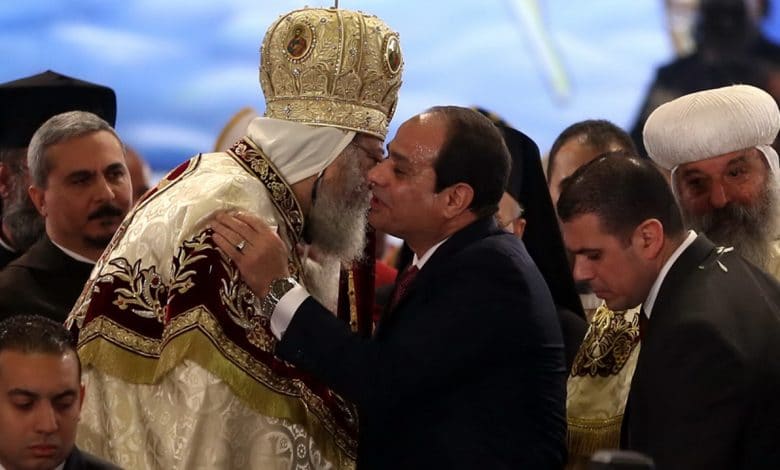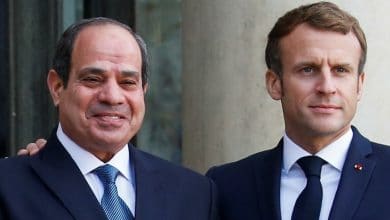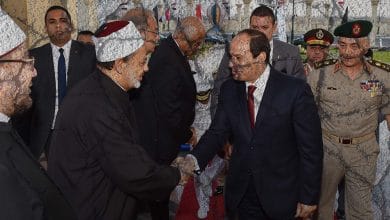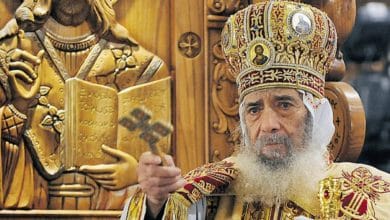
This article seeks to answer the question: What has the Coptic Church got in return for its support to Sisi and his regime? It also explores the impact of this deal on the Egyptian Copts and on the entire Egyptian people?
Church Construction
One of the major crises between the regime and the Coptic Church throughout its modern history, especially after the 1952 coup led by President Gamal Abdel Nasser, was the required administrative procedures for building churches. Therefore, the paper will attempt to investigate this issue historically so that we can understand the nature of the change that is currently taking place in this thorny file between the Egyptian State and the Church.
Hamayouni Decree
Most references, especially Coptic references, refer to the decree or directive issued by the Ottoman Caliph, Sultan Abdulmejid I, on February 18, 1858, known as the “Hamayouni Line” or the “Hamayouni Decree”, that was aimed at undertaking religious reforms in various Ottoman provinces to prevent the interference of colonial countries at the time in the internal affairs of the Caliphate under the pretext of protecting their subjects of non-Muslim minorities[1].
But in fact, history has been falsified a lot with regard to this Ottoman decree as part of attempts to distort the last Islamic Caliphate. Exploring the Articles of the Hamayouni Decree, we find that it is a major reform step undertaken by the Ottoman Sultanate towards its affiliate subjects throughout the Islamic world[2].
Part of this fraud overlooks the fact that since the establishment of the Muhammad Ali state in Egypt, where Egypt became completely independent from the Ottoman Sublime Porte in legislation and laws, as the Sublime Porte retained only the Egyptian state’s political affiliation to the Ottoman Empire. Consequently, even if some consider that Ottoman decree as representing persecution of the Copts in Egypt, which is not true, Egypt was not at the time under the legal or judicial jurisdiction of the Ottoman Caliphate, and therefore the law was not at all applied to the Copts in Egypt[3].
One of the important Coptic testimonies in this is that of Nabil Morcos, a Coptic researcher and thinker, who said, “Although Egypt at the time of issuance of the Hamayouni decree in 1856, was still a state belonging to the Ottoman Empire, the professors of the history of law “unanimously” agree that, despite political affiliation, Egypt enjoyed legislative independence, which means that the Hamayouni decree was devoid of any binding legislative value to it.”[4]
Also, the Egyptian Gazette, the official newspaper issued since 1830 that has been devoted to publishing laws and legislation, did not publish anything about that Hamayouni line[5], and therefore it has not acquired the status of binding legislation because, as we had mentioned earlier, Egypt enjoyed legal and judicial independence from the Ottoman Caliphate.
Ezaby Pasha’s Ten Requirements
El-Ezaby Pasha was the undersecretary of the Egyptian Interior Ministry in 1934, set ten requirements for building churches, the first of their kind as recognized provisions to regulate the construction of churches in Egypt, which were developed after the end of the 1923 Constitution and the approval of the 1930 Constitution that restricted freedoms and democratic rule during the government of Ismail Sidqi[6].
These ten requirements are considered by many Copts to be too difficult to meet, which greatly impedes the building of churches, while some researchers consider them objective. But the problem was not about laws or administrative regulations as much as it was about the regime’s policy in addressing the Coptic file in general[7].
These requirements, which the Copts consider as obstructing the building of churches, regardless of agreement or disagreement with that, did not prevent the Copts from building, rebuilding, or restoring churches intensively. But due to the apparent lack of legality of this move, the issue has become one of the causes of sectarian strife between Muslims and Copts in recent decades, as indicated earlier in this study.
Number of churches in Egypt
The number of churches in Egypt, according to the official data of the Central Agency for Public Mobilization and Statistics (CAPMAS), issued on August 31, 2016, is 3126 churches, in addition to dozens of monasteries scattered throughout Egyptian governorates, where they can accommodate about 24 million worshipers, that is, more than a quarter of the Egyptian population[8], while the number of Egyptian Copts, according to the latest official declared statements in this regard, ranges from 5 to 7 million Copts[9].
Therefore, the number of churches alone, excluding the monasteries, exceeds the number of the likely prayer attenders, assuming that half of the Copts are religiously committed and keen on attending rituals regularly, where the number of churches is approximately ten times the actual need. Of course, we have to take into account that there may be lack of churches in some places where there are Coptic citizens, but I am talking here about the overall view regardless of exceptions here or there.
Despite this reality, the major prize that Sisi offered the Coptic Church in the immediate aftermath of the 2013 coup d’état was stating in the 2014 Constitution, Article 235, one of the transitional articles, that: “In its first legislative term after this Constitution comes into effect, the House of Representatives (Parliament) shall issue a law to organize building and renovating churches, guaranteeing Christians the freedom to practice their religious rituals.”[10].
Later on August 30, 2016, the Egyptian Parliament approved Egypt’s Church Construction Law after it was approved by the three churches in Egypt (Orthodox, Catholic, Anglican), where a great debate arose at that time among Copts about two main points:
– That the law was not subject to any societal discussion before enactment, not even among Coptic citizens, where discussions were limited to representatives of the three churches with the government.
– That some considered it arbitrary, especially in Articles 2 and 5, in the sense that it makes security approval officially codified[11].
But the most dangerous point, according to observers of the Coptic file, is that for the first time in modern Egyptian history, Copts are being spoken of as a “sect”, not as Egyptian citizens, where the Church Construction Law recurrently states the “legal representative of the denomination”, that the State recognizes their legal personality as representatives of the sect, according to the law, which legalizes the approach of sectarianism in Egyptian society and makes the Coptic citizen the “other” in the face of the “Muslim other”.
The surprising thing is that Pope Tawadros II considered that the law “came to correct a mistake that lasted more than 160 years, and to open a new page since the days of the Hamayouni decree during the Ottoman Empire”[12], as he put it. This confirms that the church leadership welcomes the legal consolidation of the idea of sectarianism, in line with the Church’s identification of Coptic citizens as “the people of the Church”.
With the law’s entry into force, the Orthodox Church alone submitted requests to legalize the status of 4,500 churches to the ministerial committee in charge of legalizing the status of churches at the Council of Ministers, where the number of churches legalized by ministerial decisions in the last two years up to February 2020 reached nearly 1500, including churches and service buildings[13].
Note that this number relates to the already existing churches that need to be legalized due to the fact that they were not legally licensed, not to mention the new churches.
Accordingly, the most important and largest gain for the Church in Egypt was to legalize the status of churches and to open the way wide to building new churches via a single telephone call, as Anba Yoannis, the Bishop of Assiut, said, confirming that approximately 80% of churches were built on agricultural lands, unlicensed, and even having no possession documents, where the law states that whatever place where prayers takes place shall be legalized as a church, according to Anba Yoannis, confirming that the Church Construction Law stated legalization of all existing churches where prayers are performed, whether on an area of 100 meters, 200 meters, or 1000 meters; in addition to legalization of those churches that had no papers (documents), and those that no written requests were submitted for. Anba Yoannis also said that two churches in Cairo were built after only a phone call without submitting any official request or documents!”[14]
The problem is not in solving the crisis of building churches, as freedom of worship is guaranteed to everyone both in Islam and in successive Egyptian constitutions, but the problem is when there is an overuse of this right in a way that takes it beyond its natural limits, from availability of sufficient churches for Coptic brothers to exercise their right to freely perform their rituals to consolidation of the idea of “the people of the Church” whose land is the Church, and accordingly the greater the number of churches was, the greater the area of the land, the homeland” of Copts would be.
When you compare the huge number of churches that have been legalized to the daily news about the demolition of dozens of mosques under the pretext that they were not licensed or did not comply with set requirements; or those mosques where prayers were prohibited in, as the Egyptian Minister of Wakfs (endowments) Mohamed Mokhtar Gomaa reportedly issued in 2018 only a circular to the branches of his ministry in a number of governorates, banning prayers in nearly 25,000 mosques, out of the 170,000 mosques in Egypt that cannot accommodate all worshipers, which means that prayers have been prohibited in approximately 15% of mosques in Egypt in one year[15].
Accordingly, Muslims in Egypt feel angry toward the regime that fights, blazes, and demolishes mosques, while it allows the construction, renovation, and legalization of illegally-built churches.
However, while the Church leadership is moving impulsively towards building more churches as a way to strengthen its influence and presence in the life of Egyptians, it does not realize that in so doing it is increasing its isolation from the Egyptian people with its Muslim majority and voluntarily sows the seeds of anger and hatred when Egyptians put the Church and the regime on one side, which cannot be in the interest of Copts or the national bond between Muslims and Christians.
However, the gain of building churches was not the only item in the deal between the current regime and the Coptic Church leadership. The Church also received indirect support from both the Kingdom of Saudi Arabia and the United Arab Emirates, through development facilities set up by the two countries for the benefit of the Coptic Church. Also, the Church’s affiliated economic institutions received support from the armed forces, through improvement of the system of roads that lead to properties of these institutions, in addition to legalization of usurped lands that the Church had unlawfully seized, according to the statement of Anba Yoannis[16].
Also, a number of churches have been opened in several Gulf countries, including the UAE, Kuwait and Bahrain[17]. In addition, Riyadh allowed the first mass to be held in Saudi Arabia[18], as well as the official visits between church leaders and Gulf rulers, including Mohammed bin Salman and Mohammed bin Zayed, which has enhanced the Church’s political presence overseas.
The Copts also won 39 seats in the Egyptian Parliament of 2015[19], and in the upcoming elections, a quota was allocated for Copts in the Parliament, with its two rooms, as every list of 43 seats must contain at least 5 Copts, and the list of a hundred seats must contain at least 9 Copts.
Conclusion
The Coptic Church leadership considers the current era its golden age in terms of the gains it has obtained in return for its support to the Sisi regime at home and abroad, however, the great winner is the Coptic elite, not ordinary citizens.
In fact, the Church in Egypt has no longer been a place of worship only, where the authority of priests and monks over followers is no longer a religious authority only. In fact, the Coptic Church has turned into a huge religious, political and economic empire that can only be paralleled by the Egyptian army’s economic empire[20].
Footnotes
[1] Tsardom of Russia, colonial orthodox at that time, used to interfere in Ottoman affairs under the pretext of protecting the Orthodox from the Ottoman subjects, and so did France with the Roman Catholics, and England with the Evangelists.
[2] In Islamic thinker Dr. Mohamed Emara’s book: “On the Coptic Question, Facts and Illusions”, Dar Al-Shorouk edition, Cairo, there is a whole chapter that reviews all Articles of the Ottoman decree that represent a great leap in religious freedom and equality of all non-Muslim minorities within in the Sultanate’s lands with Muslims.
[3] Ibid.
[4] Report on the Religious Status in Egypt, 1995, p. 88, Al-Ahram, Cairo edition, 1996.
[5] Legislation regulating the construction and restoration of churches in Egypt, the Egyptian Initiative for Personal Freedoms, accessed Sept. 18, 2020.
[6] Conditions for building places of worship in Egypt, Al-Marefa, accessed Sept. 19, 2020.
[7] See the first five parts of this study on the Egyptian Institute for Studies website, which provide a review of the development of the relationship between the Coptic Church and the Egyptian State.
[8] “Organization of Churches”, Sisi’s reward for Copts after supporting the coup, Al-Khaleej Online, accessed Sept. 17, 2020.
[9] Egypt’s Copts and Politics: Determinants and Developments, Mamdouh Al-Muneir, Egyptian Institute for Studies, accessed Sept. 21, 2020.
[10] Church Building Law: Will it Solve the Coptic Crisis of Egypt?, Noon Post, Imad Anan, accessed Sept. 21, 2020.
[11] There had been a previous attempt in 2011 by Samir Morcos, Dr. Ali Al-Selmi and Mona Zulfiqar to develop a draft law for building churches prepared by Dr. Leila Takla, and to submit it to the government through the National Council for Human Rights, to organize the building of places of worship, but the above committee did not succeed in achieving this at the time. Details of this can be found in: “Story of Two Draft Laws for Construction of Places of Worship”, George Fahmy, Al-Shorouk, accessed Sept. 22, 2020.
[12] “Organization of Churches”, Sisi’s reward for Copts after supporting the coup, Op. Cit.
[13] The Orthodox Church: Approximately 70 churches affiliated with us were licensed based on the last “ministerial” decision, Youm7, accessed Sept. 21, 2020.
[14] The Orthodox Church in Egypt … How it has become above the Constitution and law?, al-Estiklal website, accessed Sept. 15, 2020.
[15] It happens in Egypt … Prayer is banned in 25,000 mosques, Al-Jazeera Net, accessed Sept. 21, 2020.
[16] The Egyptian Church and Politics After July 2013, The Egyptian Institute for Studies, Wessam Fauad, accessed Sept. 19, 2020.
[17] Tawadros II Inaugurates the Largest Coptic Church in the Gulf, Asharq Al-Awsat, accessed Sept. 21, 2020.
[18] The first Coptic Mass in Saudi Arabia, Al-Hurra website, accessed Sept. 22, 2020.
[19] 39 Copts and 87 women under the dome of Egyptian Parliament, Al-Wafd, accessed Sept. 21, 2020.
[20] The views expressed in this article are entirely those of the author’s and do not necessarily reflect the views of EIPSS.




